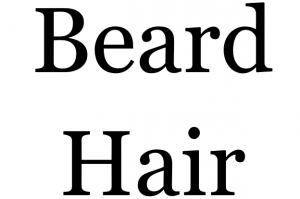Hyperbole
Within the rhetorical figures, there are those of thought, which are based on the meaning of words or phrases to express a message in a special way. One of them is hyperbole, which differs from other rhetorical figures because it exaggerates the facts, either maximizing them or minimizing them, in order to capture the attention of the listener and obtaining a greater expressive force.
What is Hyperbole?
Hyperbole is a rhetorical figure of thought characterized by intentional exaggeration of the narrated facts in order to attract the attention of the listener. It presents any fact, characteristic, attitude or situation, whether by excess or by defect. Hyperboles can be of two types depending on their exaggeration. They can be auxesis (exaggeration due to excess) or tapinosis (exaggeration due to defect). It should not be understood literally, as it is an exaggeration of a real fact.
Hyperbole has been a literary resource widely used by great poets and humorists in their productions.
In everyday life, one can observe in society, the common use of hyperbole for advertising, selling products in markets, expressing sarcasm in heavy environments or admiration for something or someone.
Etymology
The word hyperbole comes from the Greek and is formed by the prefix “hyper” which means above and the verb “bole” which means to throw. In this sense, the word could be translated as throwing over.
Characteristics of hyperbole
- It is a rhetorical figure focused on the message and how it is going to be understood.
- It is an intentional exaggeration.
- The exaggeration can be by excess or by defect.
- It can amplify or diminish the veracity of a fact.
- Makes use of comparison frequently.
- It is used to give a touch of humor or sarcasm.
- It is widely used in advertising and comedy.
- It does not express a real fact but exaggerated.
- It is common to use it in the social sphere.
Uses
Hyperbole is a rhetorical resource widely used in poem writing, as it is very useful for generating more beauty in the construction of the verse or stanza. An example can be seen in the following fragment of the poem by Baltasar de Alcázar:
“Lies, in this hard slab
a woman so thin
than in the sheath of a sword
was brought to the grave.”
Likewise, hyperbole is a very frequent element in the world of humor for the creation of jokes and comic parodies. An example can be seen in expressions such as: His teeth are so big that when he opens his mouth he scratches the floor.
Examples of the use of hyperbole
Some examples are given below.
Example 1
You’re slower than a turtle with asthma.
In this example the person referred to is not as slow as a turtle with asthma, but its slowness makes those who say the phrase uncomfortable and therefore makes intentional use of hyperbole. Here it has an intention of sarcasm and it is of type tapinosis (Exaggeration by defect).
Example 2
I called you a thousand times and you didn’t answer my call.
In fact the person did not call a thousand times, but it is to exaggerate and to call the attention of his interlocutor. It lets him know in this way that he called many times and was not answered. In this case the hyperbole has an intention of sarcasm and is of the auxesis type (exaggeration for excess).
Example 3
I’m so hungry I could eat a whole elephant.
The person who makes this statement is not going to eat an elephant but is very hungry and intentionally expresses it with this hyperbole. Here the hyperbole has an intention of desperation and is of the auxesis type (exaggeration for excess).
Example 4
I give you the moon and the stars; and whatever you want.
In truth this is impossible, as we already know, but it is a metaphorical way of saying that it gives you everything you ask for. Here he wants to express total surrender and is of the auxesis type (exaggeration for excess).
Example 5
I love you so much I sleep with my eyes open.
I love you so much that I talk to the trees.
I love you as much as nightingales.
I love you so much that I cry gold jewelry.
I love you so much that my soul has braids.
I love you so much that I forget the sea.
I love you so much that spiders smile at me.
I love you so much that I am a giraffe.
I love you so much that I phone God.
I love you so much that I was just born.
Carlos Edmundo de Ory
In this poem you can see many hyperbole figures that give a feeling of intensity and love to the verses. The type of hyperbole of this poem is auxesis (exaggeration by excess).
Example 6
Faster than a turtle, stronger than a mouse, more noble than a lettuce, its shield is a heart. The Chapulin Colorado is the most famous “superhero” on Mexican television.
With these phrases began the program of the Chapulín Colorado, a humorous program. As you can see how hyperbole is used as a humorous resource, where the exaggerations are totally ironic and achieve their goal of making the public laugh. In these phrases, the two types of hyperbole can be observed, tapinosis (exaggeration by default) in phrases like stronger than a mouse or faster than a turtle and auxesis (exaggeration by excess) in the phrase the most famous superhero of Mexican television.
Example 7
“With me crying the stones become tender
its natural hardness and break it;
the trees seem to bow;”
Eclogue I of Garcilaso de la Vega
In this fragment of Garcilaso de la Vega’s poem, one can appreciate the use of hyperbole to generate intensity in the message using exaggeration as a rhetorical figure. In these verses a hyperbole of the auxesis type (exaggeration due to excess) can be seen.
How to cite this article?
Briceño V., Gabriela. (2019). Hyperbole. Recovered on 3 January, 2025, de Euston96: https://www.euston96.com/en/hyperbole/










